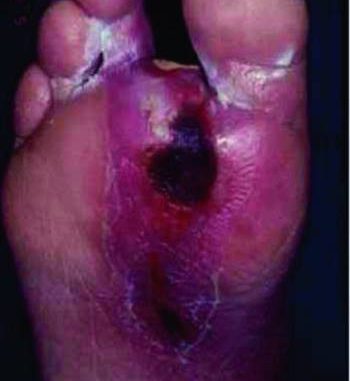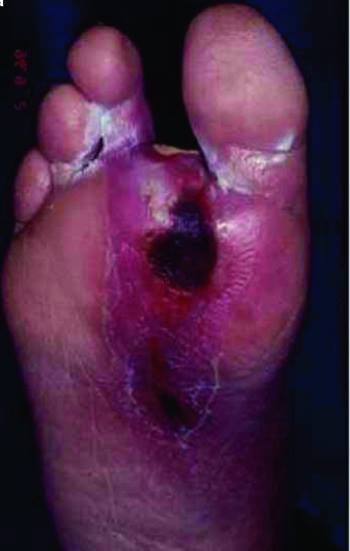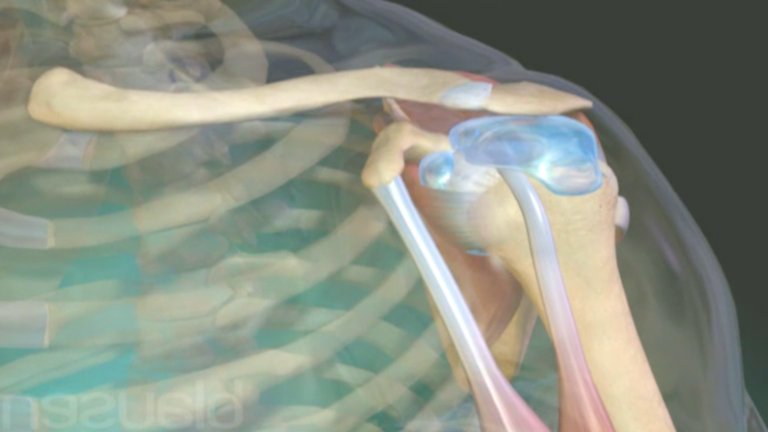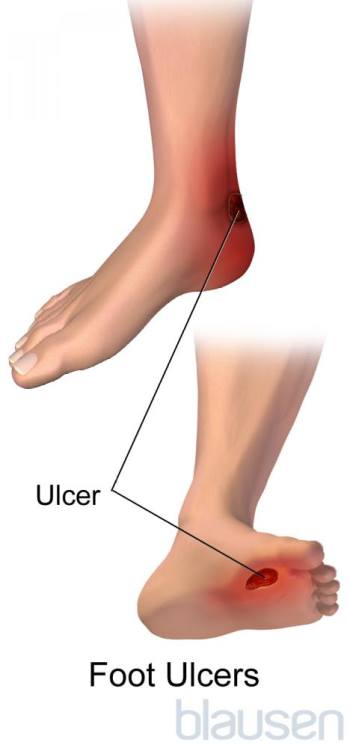
There are two types of diabetes mellitus
- Type 1
In type 1 diabetes (formerly known as insulin- dependent or juvenile diabetes), the immune system attacks the insulin- producing cells of the pancreas and permanently destroys more than 90 percent of them. The pancreas therefore produces little or no insulin . Only about 5–10 percent of all people with diabetes mellitus have type 1 disease. Most people with type 1 diabetes develop the disease before the age of 30, but it can also develop later in life.
It is scientifically believed that external factors – possibly a viral infection or nutritional factors in childhood or early adulthood – cause the immune system to destroy the insulin- producing cells in the pancreas. A genetic predisposition makes some people more sensitive to external factors.
- Type 2
In type 2 diabetes (formerly known as non- insulin- dependent diabetes mellitus or adult diabetes), the pancreas continues to produce insulin , sometimes even more than normal, especially early in the course of the disease. However, the body develops resistance to the effects of insulin , so there is not enough insulin to meet the body’s needs. As the disease of type 2 diabetes progresses, the pancreas increasingly loses its ability to produce insulin .
Type 2 diabetes was rare in children and adolescents in the past, but has become more common recently. However, it usually starts in people over 30 and gets more common with age. About 26 percent of people over 65 have type 2 diabetes. People with a specific racial and ethnic background have an increased risk of developing type 2 diabetes: African Americans, Native Americans and people with a Spanish or Latin American migration background who live in the United States have a two to three times higher risk compared to whites. Type 2 diabetes also tends to be familial.
The main risk factor for type 2 diabetes is obesity , and 80 to 90 percent of people with this condition are overweight or obese. Because obesity leads to insulin resistance, overweight people need very large amounts of insulin to maintain normal blood sugar levels.
In both types, the sugar (glucose) in the blood is increased.
People with type 1 or type 2 diabetes are very likely to have symptoms that result from increased blood sugar levels. However, in people with type 2 diabetes, these complaints can persist some time before the disease is diagnosed and can therefore often be more severe and more advanced.
People with diabetes mellitus can develop many serious long-term complications. Some of these complications start within a few months of the onset of diabetes, but most tend to develop after a few years. Most complications gradually worsen. In diabetics, tight control of blood sugar levels makes these complications less likely to develop or worsen.
causes
Most complications in diabetes result from blood vessel disorders. Long-term high glucose levels cause both small and large blood vessels to narrow. The narrowing reduces blood flow to many parts of the body, which leads to problems. There are several causes of narrowing of the blood vessels. Complex substances made from sugar accumulate in the walls of the small blood vessels, strengthen them and make them permeable. Poorly controlled blood sugar levels also tend to increase blood lipid levels, which leads to atherosclerosis and reduced blood flow in the larger blood vessels.
Types of complications in diabetes
Blood vessel disorders in diabetes
Atherosclerosis leads to heart attacks and strokes . Atherosclerosis is 2 to 4 times more common and tends to occur in younger diabetics than in non-diabetics.
Over time, the narrowing of the blood vessels can damage the heart, brain, legs, eyes, kidneys, nerves and skin and lead to angina pectoris , heart failure , strokes, crampy leg pain when walking (intermittent claudication), poor eyesight, chronic kidney disease , nerve damage ( Neuropathy) and damage to the skin.
Skin problems with diabetes
Poor skin circulation can lead to ulcers and infections, and wounds heal slowly. Above all, diabetics are at risk of getting ulcers and infections on their legs and feet. More often than not, the wounds heal too slowly or not at all. If the wounds do not heal, this can lead to gangrene (tissue death) and the foot or part of the leg must be amputated.foot ulcer

© SPRINGER SCIENCE + BUSINESS MEDIA
Diabetics often get bacterial and fungal infections, typically on the skin. With high blood sugar levels, white blood cells cannot effectively fight infections. All infections tend to be more severe and take longer to heal.
Eye problems with diabetes
Damage to the blood vessels in the eye can lead to loss of vision ( diabetic retinopathy ). Bleeding blood vessels in the eye can be sealed with laser surgery to prevent permanent damage to the retina. Sometimes other surgical procedures or injectable medication can be given. Therefore, diabetics should have their eyes examined every year to look for early signs of damage.Diabetic retinopathy

Kidney damage in diabetes
Renal function may be impaired , leading to chronic kidney disease , which may require dialysis or kidney transplant . Doctors usually check the urine of diabetics for abnormally high levels of proteins (albumin), which is an early sign of kidney damage. At the first sign of kidney complications, diabetics are often given angiotensin II converting enzyme (ACE) inhibitors, drugs that slow the progression of kidney damage.Diabetic nephropathy



Diabetes nerve damage
Nerve damage can show up in different ways. If only a single nerve is damaged, weakness in one arm or leg can suddenly appear. If the nerves of the hands, legs and feet are damaged (diabetic polyneuropathy ), unusual sensations can occur, and tingling or burning pain and weakness in the arms and legs can develop. Damage to the skin nerves makes repeated injuries more likely because people cannot feel changes in pressure or temperature.
The diabetic foot
| Diabetes causes many changes in the body. The following changes to the feet are common and difficult to treat.Nerve damage (neuropathy) affects the sensitivity of the feet, so pain is no longer felt. Irritation and other forms of injury can go unnoticed. An injury can go under the skin before pain is felt.Changes in sensation affect how diabetics strain their feet, focusing the weight on certain areas, so calluses form. Calluses (and dry skin) increase the risk of skin damage.Diabetes can cause poor blood flow to the feet, increasing the risk of skin ulcers that heal more slowly after skin injuries.Because diabetes can affect the body’s ability to fight infection, a foot ulcer becomes infected quickly after it is formed. Because of the neuropathy, the infection may not cause discomfort until it is severe and difficult to treat, then gangrene occurs. Diabetics are more than 30 times more likely to have a foot or leg amputated than non-diabetics.Foot care is important ( foot care ). The feet should be protected from injury and the skin must be kept moist with a suitable skin care product. Shoes should fit well and should not cause pressure points. Shoes should be padded so that the foot can spread under the strain when standing. Walking barefoot is unwise. Regular care by a podiatrist (a doctor who specializes in podiatry), for example to cut the toenails and remove calluses, can also be helpful. The sensibility and blood circulation in the feet should also be checked regularly by the doctor. |
Foot ulcers due to diabetes


Pedicure for diabetics


Monitoring and prevention of complications from diabetes
At the time of diagnosis and at least annually thereafter, people with type 2 diabetes are monitored for complications from diabetes, such as damage to the kidneys, eyes and nerves. Doctors start screening tests in people with type 1 diabetes 5 years after diagnosis. Typical screening tests are the following:
- Examination of the feet for sensitivity and signs of poor circulation (ulcers, hair loss)
- Eye exam (done by an ophthalmologist)
- Blood and urine tests for kidney function
- Blood tests for cholesterol
- Sometimes an electrocardiogram
Worsening of the complications can be prevented or delayed by strict control of blood glucose levels or by early drug treatment. Risk factors for heart disease, such as high blood pressure and high cholesterol, are assessed each time you see a doctor and treated with medication if necessary. Another common problem for diabetics is gingivitis, so regular visits to the dentist for cleaning and prevention are important here.
Did you know …
| People who strictly control their blood sugar levels may be able to minimize or delay the complications of diabetes. |
Prevention of hypoglycaemia
One of the problems that occurs when you try to control your blood sugar levels tightly is that widespread antidiabetics (such as insulin or sulfonic ureas) can result in low blood sugar ( hypoglycaemia ). Detecting low blood glucose levels is important because treating hypoglycaemia is an emergency. Symptoms may include excruciating hunger, rapid heartbeat, tremors, sweating, and a lack of clear thinking.
With severe hypoglycemia, sugar must get into the body quickly to avoid permanent damage and relieve symptoms. In most cases, people can eat sugar. Almost every form of sugar works, although glucose works better than table sugar (sucrose is a typical table sugar). Many people with diabetes have glucose tablets or glucose gel packs with them. You can also drink a glass of milk (which contains the sugar form lactose), sugar water or fruit juice, or eat a piece of cake, a fruit or some other sweet food. In more serious situations, the emergency service may need to inject glucose into a vein.
Glucagon is used in another treatment for hypoglycaemia. Glucagon can be injected into the muscle and causes the liver to release large amounts of glucose within minutes. For people who often have low blood sugar, there are small, portable containers that contain a glucagon syringe for emergency use when no sugar can be absorbed through the mouth.